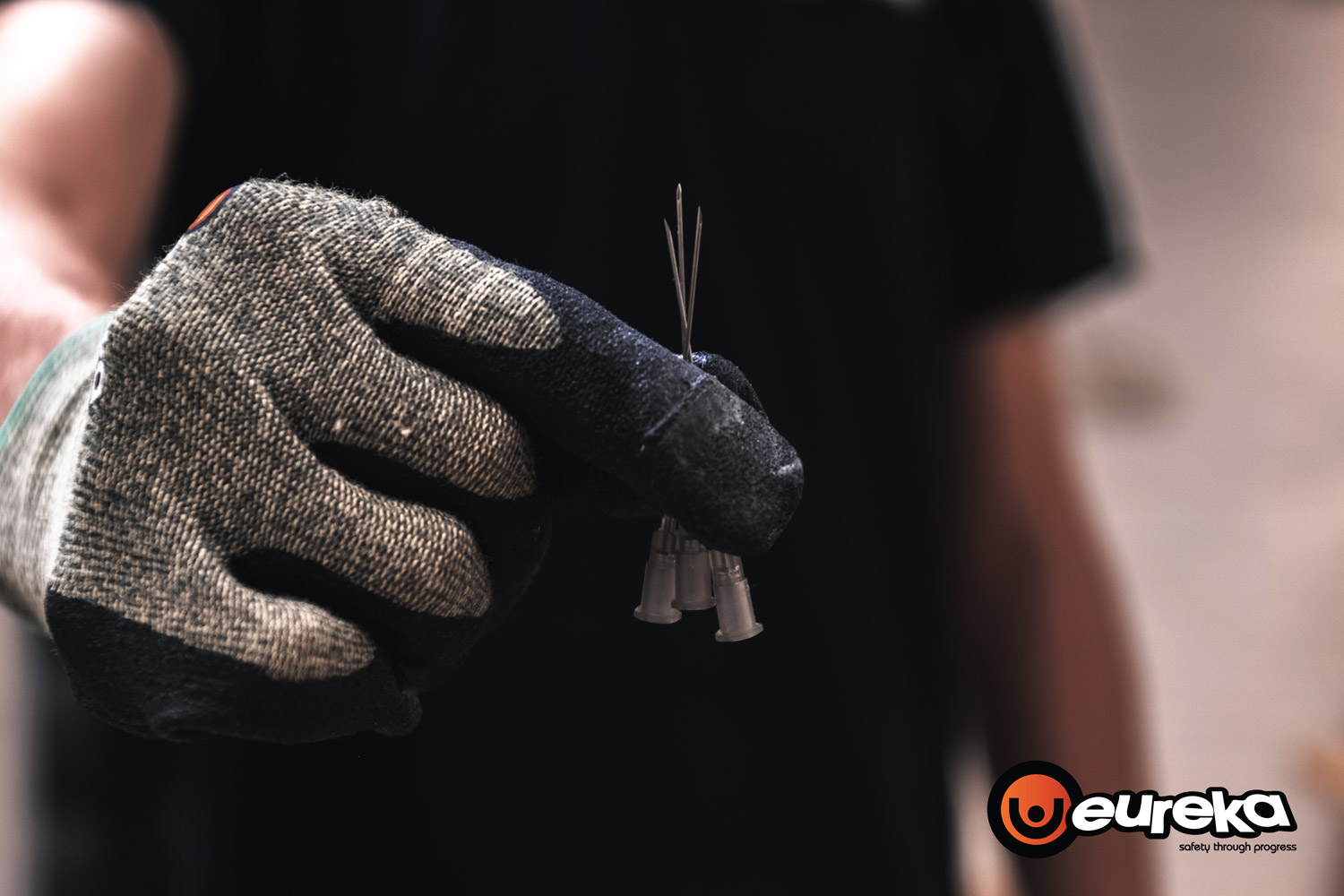Puncture vs. Needlestick
When to use Puncture resistant cut glove or a true needle resistant glove?
The difference between a cut and a puncture may not be obvious. A cut may start with the tip of a pointed object and continue as a cut. However, when exposed to puncture risks such as wood splinters or sharp metal or glass shards, you should get some puncture protection. The puncture may also be crude and blunt or very fine with a sharp cutting edge, like a hypodermic needle.
The puncture test in the EN388 standard is made with a 1mm flat tip probe, which is very coarse compared to real-life puncture hazards. At Eureka, we test puncture resistance from coarse probes to thin and sharp needles. The key takeaway is that when the puncture threat is finer than about 0.5mm in diameter, you need to switch from a “Puncture 3 or 4 rated” cut-resistant glove to a real needle-resistant glove like the Eureka 15-4 Puncture Soft.


